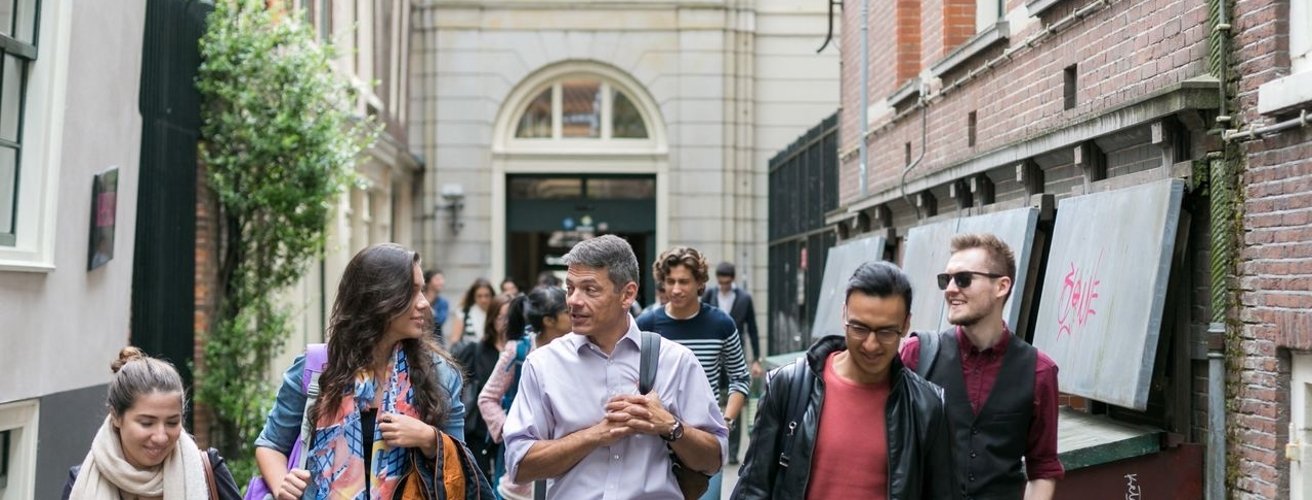Postdoctoral research positions in Dark Universe Physics & Machine Learning
Postdoctoral research positions in Dark Universe Physics & Machine Learning
You cannot apply for this job anymore (deadline was 8 Dec 2020).
Browse the current job offers or choose an item in the top navigation above.
Job description
We invite applications for one or more postdoctoral research positions in the areas: dark matter phenomenology, cosmology, gravitational waves, machine learning for computational physics and statistical modeling, probabilistic and differentiable programming, and algorithms of deep learning.
The positions will start in fall 2021 and will be for initially two years, with a possible extension by another year contingent on performance. Successful applicants will work in the research group of Dr Christoph Weniger, and are encouraged to participate in the vibrant research environment of GRAPPA. Through UvA, they will receive access to major Dutch computing facilities. Research results are expected to be disseminated through scientific publications, conference presentations and/or software distributions.
The research group of Dr Christoph Weniger aims at finding signals of physics beyond the Standard Model using a wide range of astrophysical observations. Focus is given to new observational approaches and technical challenges that others have not been able to overcome. The group has strong ties to the Dutch eScience center and AMLab, and is part of the GRAPPA cluster of excellence. More details can be found here.
What are you going to do?
You will work in the group of Dr Christoph Weniger, and be embedded in the GRAPPA Center of excellence in Gravitation and Astroparticle Physics, a multidisciplinary team of researchers active in a variety of research topics including dark matter, compact objects, high-energy astrophysics and physics beyond the standard model.
Specifications
- max. 38 hours per week
- €2790—€4402 per month
- Amsterdam View on Google Maps
Requirements
You:
- have a PhD in physics, astronomy or computer science;
- are able to work independently and to collaborate in a collegial multidisciplinary research environment;
- have demonstrated abilities in theoretical physics, software and algorithm development, and/or astrophysical modeling.
Conditions of employment
Our offer
A temporary contract for 38 hours a week, preferably starting in the Fall of 2021 for the duration of 2 years, with possible extension of a third year depending on performance. An assessment will take place at the end of the first year.
The salary, depending on relevant experience before the beginning of the employment contract, will be €2,790 to €4,402 (scale 10) gross per month, based on a full-time contract of 38 hours a week. This is exclusive 8 % holiday allowance and 8,3% end-of-year bonus. A favourable tax agreement, the ‘30% ruling’, may apply to non-Dutch applicants. The Collective Labour Agreement of Dutch Universities is applicable.
Are you curious about our extensive package of secondary employment benefits like our excellent opportunities for study and development? Then find out more about working at the Faculty of Science.
Employer
University of Amsterdam
With over 5,000 employees, 30,000 students and a budget of more than 600 million euros, the University of Amsterdam (UvA) is an intellectual hub within the Netherlands. Teaching and research at the UvA are conducted within seven faculties: Humanities, Social and Behavioural Sciences, Economics and Business, Law, Science, Medicine and Dentistry. Housed on four city campuses in or near the heart of Amsterdam, where disciplines come together and interact, the faculties have close links with thousands of researchers and hundreds of institutions at home and abroad.
The UvA’s students and employees are independent thinkers, competent rebels who dare to question dogmas and aren’t satisfied with easy answers and standard solutions. To work at the UvA is to work in an independent, creative, innovative and international climate characterised by an open atmosphere and a genuine engagement with the city of Amsterdam and society.
Department
Faculty of Science - Institute of Physics
The Faculty of Science has a student body of around 7,000, as well as 1,600 members of staff working in education, research or support services. Researchers and students at the Faculty of Science are fascinated by every aspect of how the world works, be it elementary particles, the birth of the universe or the functioning of the brain.
The center of excellence in Gravitation and Astroparticle Physics (GRAPPA ) is connected to the Institute of Physics and the Anton Pannekoek Institute at the University of Amsterdam as well as Nikhef. GRAPPA researchers have wide research interests, including dark matter phenomenology, cosmic rays, high-energy astrophysics, cosmology, black holes physics, gravitational waves, and string theory. It also includes experimental physicists active in the Antares/KM3NeT, ATLAS, CTA, LOFAR, and XENON1T collaborations
Specifications
- PhD
- Natural sciences
- max. 38 hours per week
- €2790—€4402 per month
- University graduate
- 20-646
:fill(white)/logos/uva-en-wide.png)
